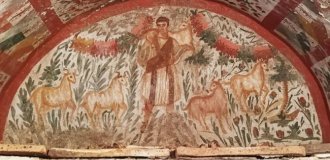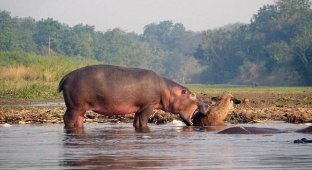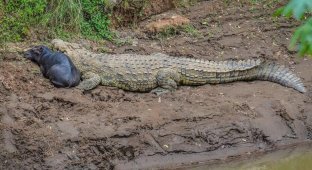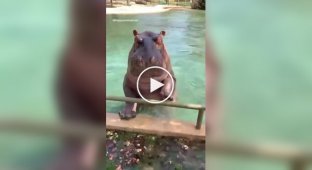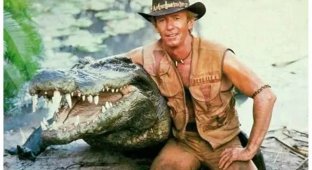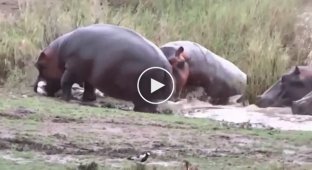An alliance of crocodiles and hippos: Why did the two titans of Africa decide to ignore each other? (12 photos)
— Dear spectators, today in our ring will meet two of the most dangerous creatures of African rivers and lakes! Meet, in the red corner of the ring, a herbivorous titan with a hot temper and sharp fangs — the extraordinary Common Hippopotamus! And in the blue corner lurks a cunning and cold-blooded killer — the Nile Crocodile!
Alas, but this greatest fight had to be cancelled and all the money for the tickets returned. Both opponents categorically refused the fight! 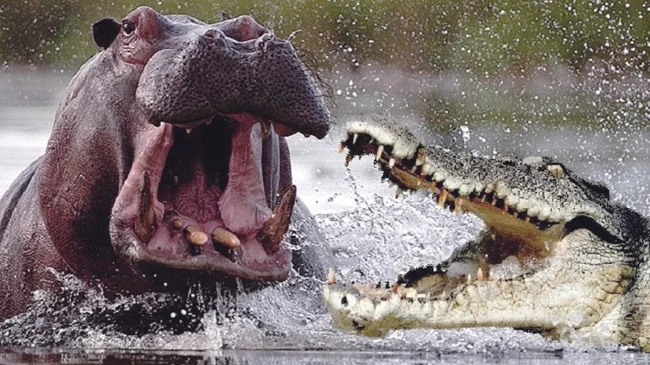
Wouldn't that make a great poster to announce the fight!
But why? Aren't hippos and crocodiles natural enemies?
It turns out that animals do understand diplomacy after all. An uneasy truce has been in place between these two dangerous animals for millions of years.
The evolutionary arms race has made the hippopotamus and crocodile too dangerous for each other. Let's take a look at the sides. 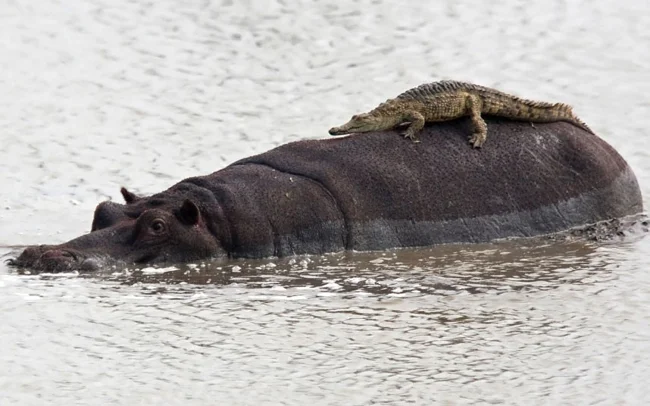
Wow, what a warm and soft stone. I like it! 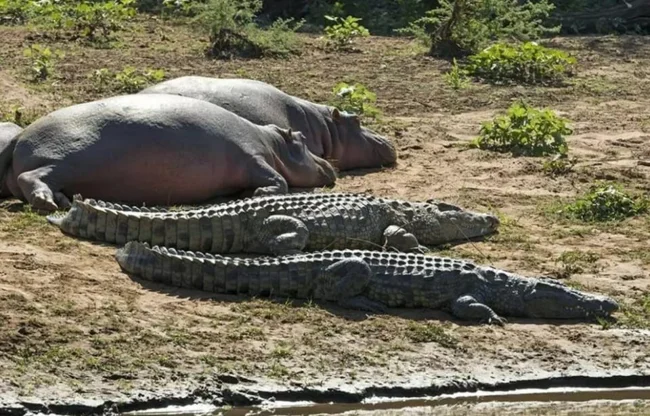
A joint vacation of two couples always looks something like this.
A hippopotamus looks impressive - one and a half tons of live weight combined with thick skin and powerful jaws.
The bite force of the herbivorous titan is 800 kg per square centimeter!
For example, in humans, this figure is somewhere around 40-90 kg per square centimeter.
A hippopotamus could easily crunch the bones of its enemies without teeth, but it has half-meter fangs in its arsenal. 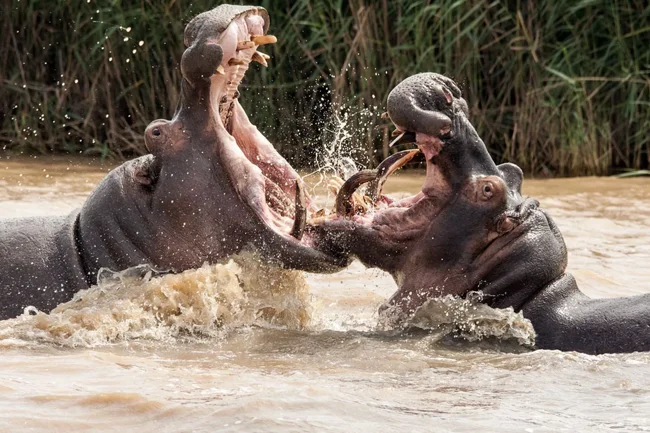
Unlike many other animals, fights between male hippos are truly bloody and furious. Rivals often end the fight with serious wounds from each other's fangs.
Unlike predators, an aggressive pot-bellied hippopotamus does not have a braking mechanism. A hippopotamus won't think about whether to fight. It will just charge like a tank, only sensing a threat.
And if one hippopotamus is already a frightening monster, then I hasten to please you - they do not go alone.
On average, a group of hippos consists of 20-30 individuals. But during a drought, the number of heads increases to 200! 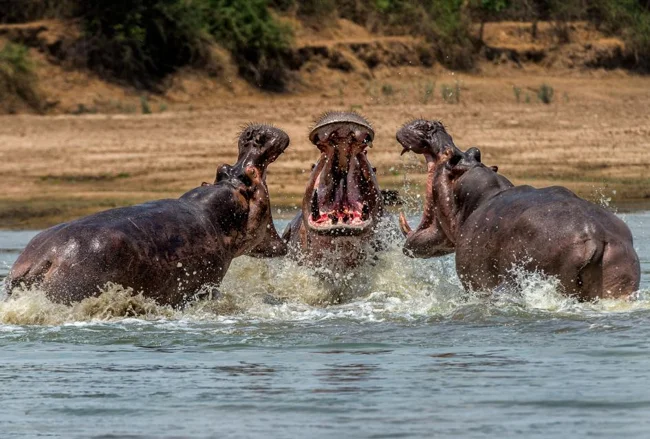
Constant conflicts over females or a good place in a pond are a common routine in a group of hippos.
The Nile crocodile on the other side of the barricades is no slouch either. It is the second largest crocodile in the world, with large specimens reaching 5 meters in length. Its body is encased in strong armored scales, and its mouth is strewn with a palisade of sharp teeth.
But most importantly, the cold-blooded predator has one of the most powerful weapons created by nature in its arsenal.
The bite force of a Nile crocodile reaches 2 tons per square centimeter! 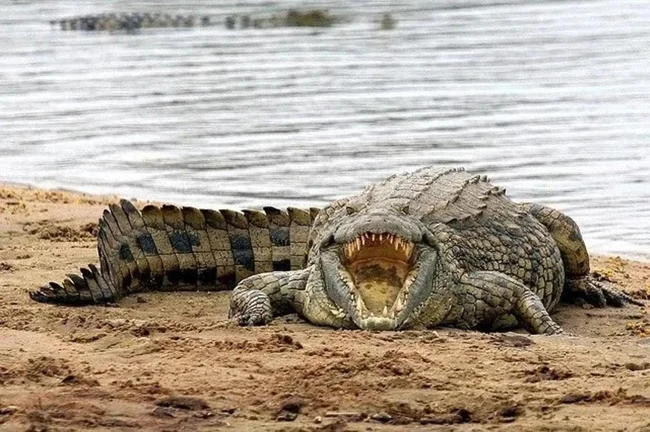
African stapler. Brutal and merciless.
The crocodile is not only strong. It is also secretive. The reptile, hiding in the water, can wait for hours for the right moment to attack.
But even with such a set, the cold-blooded hunter prefers to lie flat on his belly and not twitch in the presence of hippos. 
A camouflaged trap. Activated and very dangerous!
If crocodiles and hippos decided to go against each other, African rivers would turn into rivers of blood.
That's why the two powerful beasts decided to abandon targeted violence. 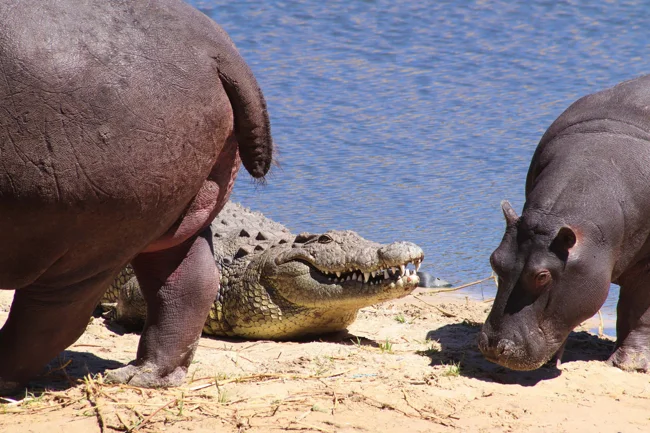
Guys, don't pay attention, I'm just a log.
A charming picture of baby hippos grazing next to the stern reptiles makes the Internet sentimental. Someone even writes that mother hippos leave their offspring next to crocodiles specifically so that the toothy ones can protect their children.
But don't think that both animals "agreed" on peace out of the kindness of their hearts and religiously observe the unwritten rules. 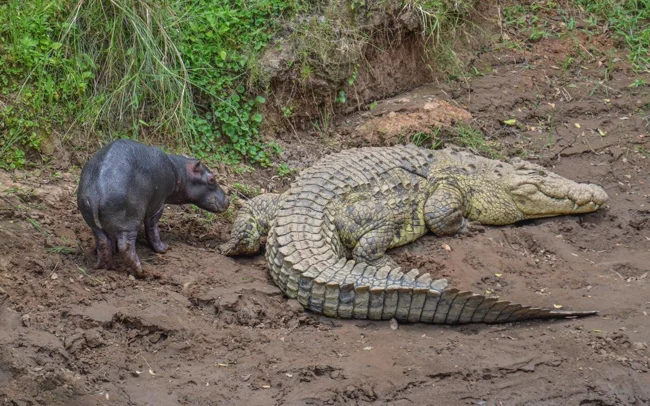
This photo has caused many speculations that crocodiles and hippos are "friends." In fact, the reptile most likely just recently had lunch. That's why it is not interested in easy prey.
The reality is much more down-to-earth: if a young hippopotamus strays from the herd, the hungry lizards will tear it apart in an instant.
If a cheeky croc decides to approach the hippos and snatch the baby, the hippos will crush the scoundrel and squeeze the reptiles out of their hunting grounds. 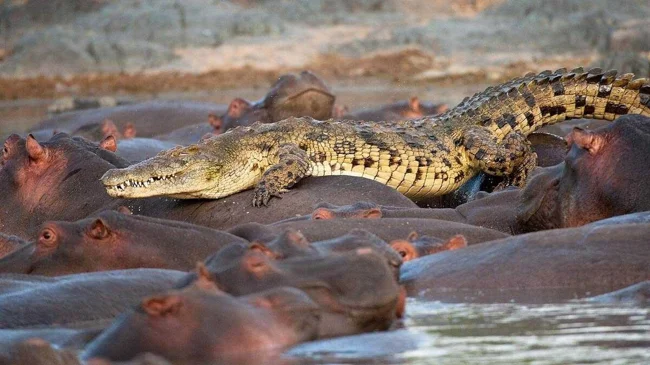
As an example, here is a tragedy in three acts. The crocodile lies peacefully on the backs of hippos. They don't mind. But... 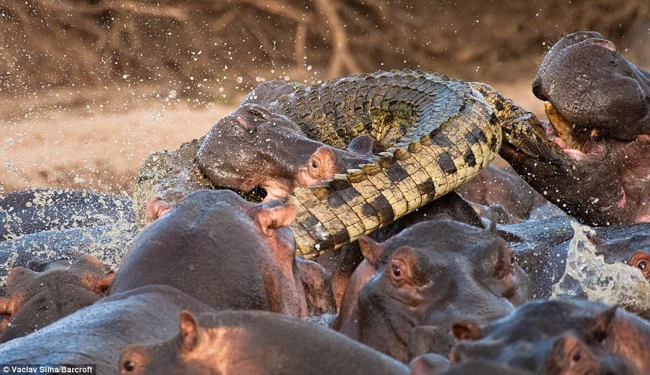
The reptile decided to move to another place. The movements caused panic in the herd. 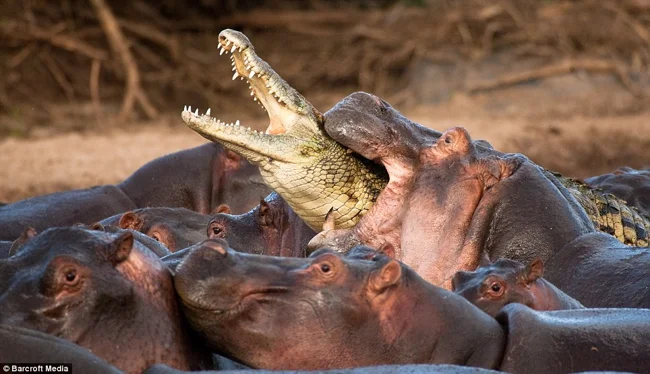
As a result, the crocodile was destroyed. Alas, peace, friendship, and chewing gum did not work here.
But while the forces are equal, a peaceful picture can be seen in the vastness of the African savannahs.
The animals become each other's "best enemies".
In addition, passive-aggressive neighborhood brings benefits to both species. Crocodiles lie in wait for weak and sick hippos, keeping the population in good shape.
Meanwhile, the presence of hippos scares off the crocodile's land competitors, making its life easier.
The cold war between the two species made them stronger!





